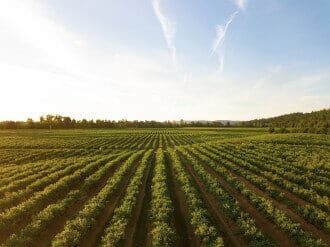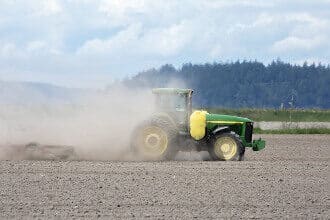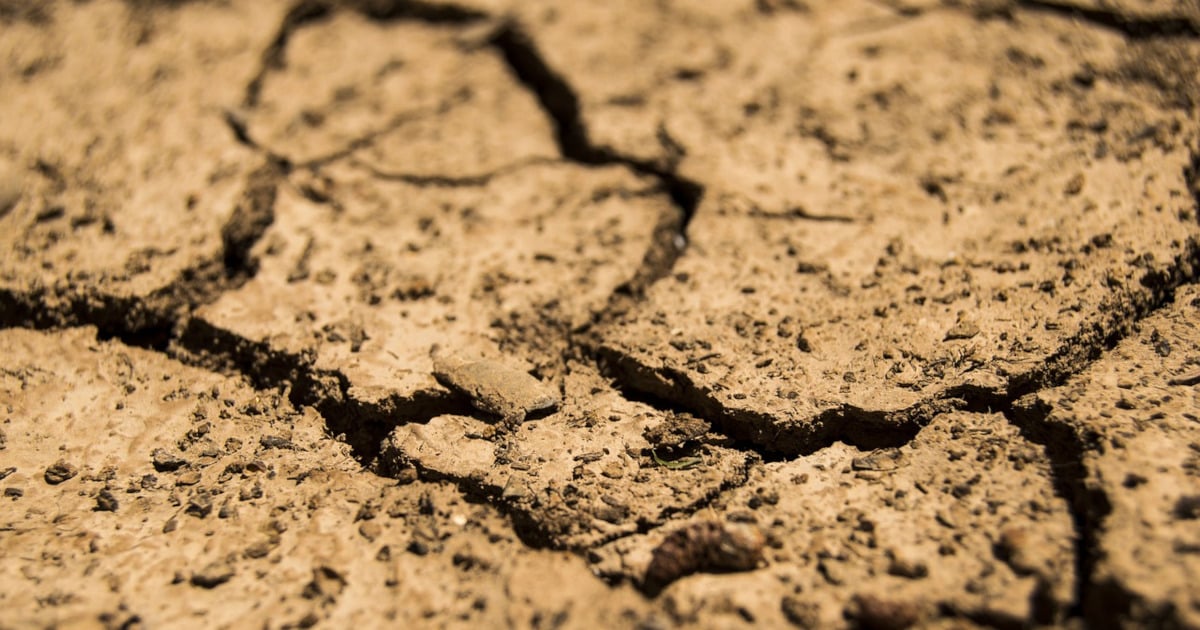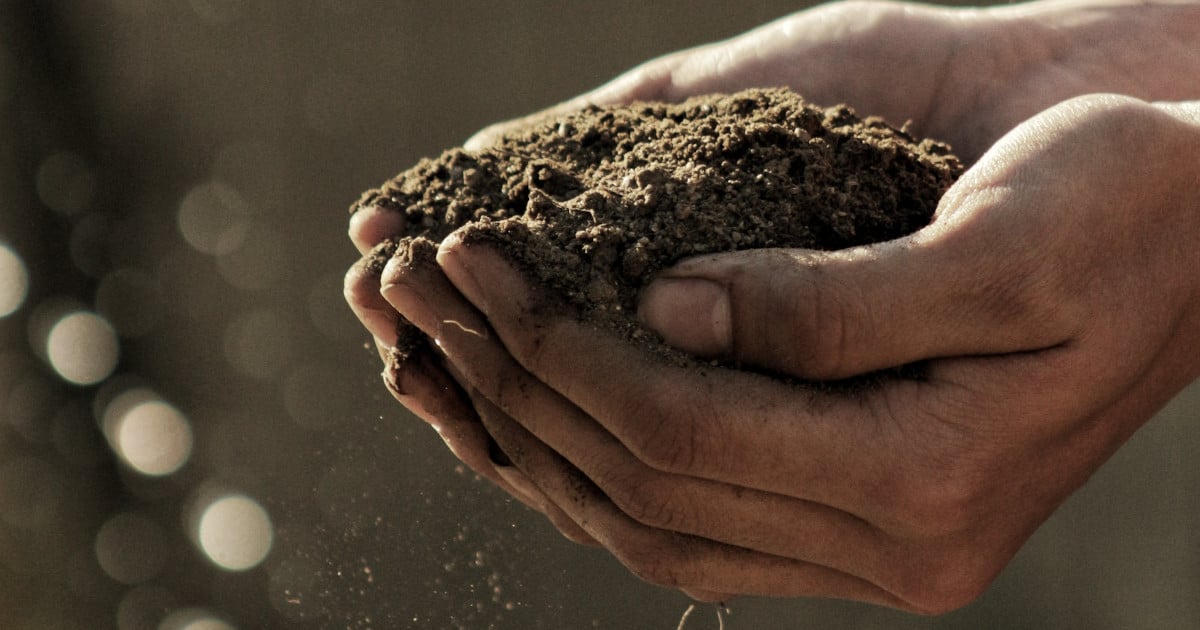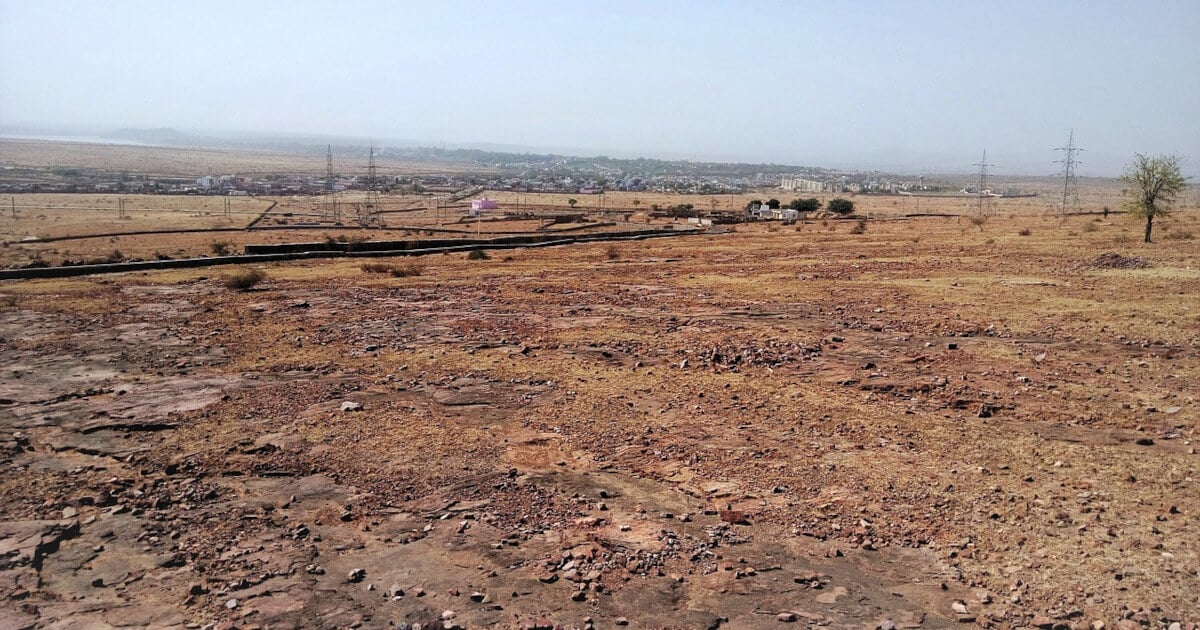By Harry Cooper
Many people think of soil as nothing more than the dirt beneath our feet. But soil is an integral part of maintaining environmental functions all around the world.
Soil is capable of storing and cycling nutrients, carbon, and water. This allows it to perform all kinds of important functions.
The Importance of Healthy Soil
A healthy soil is filled with microorganisms and nutrients that help plants grow bigger and produce more agricultural crops. In addition, healthy soils help to filter out pollution and fight climate change.
Without healthy soil we would be unable to grow the food we need to survive, and countless ecosystems around the world would fail. But, unfortunately, human influence and unsustainable practices have caused the degradation of soil around the world.
This has harmed crop yields and decimated ecosystems. However, there is still hope since soil conservation practices help make sure soil stays healthy and fertile.
What Makes Soil Healthy?
Before understanding how to conserve soil, it is important to set a standard for what a healthy soil looks like. However, this can be tricky as there are a variety of factors that affect soil, and how well it performs its various functions.
There are many different ways to quantify soil health. One could look at the presence of microorganisms, nutrient richness, plant growth or physical soil structure etc.
But while there are many different factors to judge soil health by, they can be divided into three categories of soil health indicators: physical, chemical and biological.
Soil Health Indicators
Physical soil health is determined by how sturdy the soil particles are. This is measured by how well soil particles stay together when disturbed by tilling and other disruptions. Physical soil health indicators are important for determining how well a soil can retain and drain water as well as resist erosion.
Chemical indicators of soil health deal with the presence of different nutrients, as well as the pH balance of the soil. Having enough nutrients in a soil is essential for helping plants grow in it, and maintaining a healthy pH balance helps determine how well plants will be able to uptake nutrients from the soil.
Biological soil health is determined by the presence of organisms and soil organic matter in the soil. An abundance of microorganisms and other decomposers are an essential part of cycling nutrients throughout soil. These microorganisms also play an essential role in helping soil sequester carbon.
Why We Need Healthy Soils
It is incredibly important to maintain soil quality no matter where we are in the world. Not only does a healthy soil provide a variety of essential functions to ecosystems in the natural world, but it is beneficial for humans as well.
Agriculture
One of the most important functions of soil is its role in agriculture. Without a strong nutrient rich soil, farms are less capable of producing crops.
This makes it harder for farmers to produce a sufficient amount of food to feed the people that need it. This makes soil an integral part of maintaining the global food system.
Carbon Sequestration
Soil also has the ability to take carbon dioxide out of the air and store it away in a process called carbon sequestration. This process occurs as plants with stored carbon die and decompose.
As they decompose a lot of this carbon gets released back into the atmosphere. But depending on the conditions of the soil, a lot of this carbon will get stored in the soil where it won’t contribute to climate change.
Water Quality
Another important function of soil is its ability to regulate water quality. When soil is healthy it is capable of storing and releasing water.
Through this process, it is also capable of filtering out any excess nutrients or pollutants found in the water. This is incredibly important for nutrient and water cycling, as well as maintaining general water quality.
However if soils are unhealthy by being too loose or sandy, they lose their capacity to cycle water. This also makes them more likely to fall victim to water erosion.
How is Soil Degraded?
Healthy soils perform many important functions. But there are many things that lessen the quality of soils.
What’s more is that the degradation of soils is primarily caused by human impacts on the environment. These impacts mainly come from the agricultural industry.
Agricultural Practice
While healthy soils are crucial to a functioning agricultural system, many agricultural practices are actually harmful to soil health. This destruction of soil due to agriculture starts with the clearing of land.
Slash and burn techniques involve cutting and burning plants to make way for farms. This process destroys the ability of root systems to keep soil in place and strips the soil of nutrients.
The land is then quickly used for commercial farming. This leaves very little time for the soil to recover its nutrients and structure.
Farms will also often use chemical fertilizers and pesticides that are incredibly harmful to soil health. Pesticides are great at killing pests, but once they get into the ground they poison the soil and kill off precious soil organisms.
In addition, chemical fertilizers help add extra nutrients to the soil. However, when used for a long period of time, these fertilizers deplete the natural nutrients in the soil, and force plants to rely on a man-made additive.
As land gets used and overused for farming it puts a continual strain on soil health. By continuing to use unsustainable farming techniques, we are giving soil very little room to recover to a healthy state.
And as we continue to plant our crops on these degrading soils, our crop yields will suffer as well. This makes a lose-lose scenario for humans and the environment.
Wind and Water Erosion
Another threat to soil health is erosion. Soil erosion is a natural process, but when it becomes exacerbated by human activity it can become a serious problem.
Soil erosion occurs when strong winds or rain strip away valuable layers of topsoil. These contain most of the soil’s nutrients and microorganisms.
Erosion can remove soil at ten times the rate at which it naturally replenishes. This makes it incredibly difficult for an area to retain a healthy layer of soil.
Human activity makes soil erosion much worse. Industrial processes such as tilling, cutting forests, and land clearing in general leave soil loose and exposed to the elements.
This makes it much easier for wind and rain to strip away the layers of soil. Additionally it makes it much harder for an area to maintain plant growth.
Soil Conservation Practices
It is important to ensure that we have enough healthy soil to support our agricultural system and the ecosystems of the world. Therefore it is crucial that we practice soil conservation techniques.
With modern farming being so destructive towards soil, many of these soil conservation methods are centered around reforming our agricultural system. These techniques work to make a more sustainable agricultural system.
Sustainable Agriculture
Agriculture is incredibly harmful to the health of soils everywhere. But by using the right techniques, farms can preserve soils while improving there annual crop yields.
One such technique is using cover crops. Cover crops are plants planted in the off season of farms so that the ground remains covered by vegetation all year round. This prevents erosion by covering barren soil and also helps to naturally replenish nutrients into the soil such as nitrogen.
Another technique that some farmers use is crop rotation. Different crops require different nutrients, and by planting one crop in the same spot each year it saps up all the nutrients that it needs. When crops are rotated and planted in different spots each year, soils are more capable of naturally replenishing the nutrients that they’ve lost.
Reducing the amount of tilling used in farming also helps to maintain a healthy soil. Tilling disrupts around the top ten inches of soil in order to make seed planting easier.
However, by disturbing soil in this way tilling removes plant cover and kills off organic matter in the soil. This removes massive amounts of nutrients, loosens up the soil making it more susceptible to erosion, and decreases the soils ability to retain water.
However there are certain conservation tillage techniques like no-till farming, which allow farmers to plant seeds without disturbing the soil. This helps soil retain its structure, moisture, and nutrients, making it much more resistant to erosion.
Soil Conservation and Religion
Soil Stewardship Week is an American invention with deep Christian roots. John Murdock writes for the First Things blog about it, quoting from a “Soil Stewardship Sunday” brochure:
THIS IS SOIL STEWARDSHIP WEEK, so designated by the National Association of Soil Conservation Districts with the cooperation also of the National Catholic Rural Life Conference. Let us remind ourselves that “the earth is the Lord’s” and we are at most only stewards of the soil as well as all our earthly possessions to use them as entrusted to us by the Creator for our temporal and above all our eternal good. Some of our things we use up, but the soil is one of those things that needs to be managed properly to insure its continued usefulness, in fact to improve it, and to pass it on to future generations for their use. The riches of the soil can be exhausted by greedy, selfish, and unwise use. The good steward, however, not only carries out good conservation practices against erosion, but understands that the fruits of the soil draw out of it something that he needs to replace to avoid its depletion. In this work of keeping up good land or even building up poor land, the farmer is a good steward and partner with the Creator.
This a beautiful description in which we see soil conservation as a religious duty. “The Earth is the Lord’s.” We are just the caretakers.
* Featured image source
Related Articles
 Next article Soil Exhaustion Is Caused By Humanity
Next article Soil Exhaustion Is Caused By Humanity


